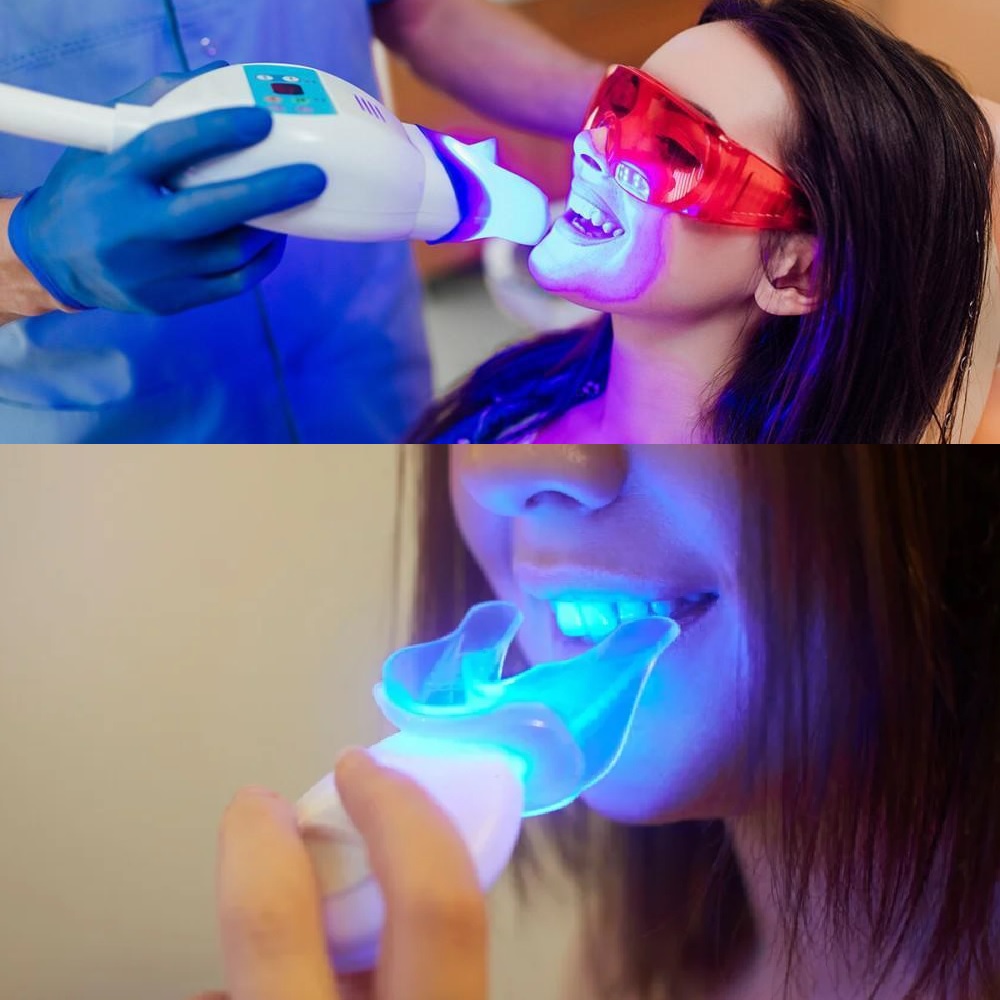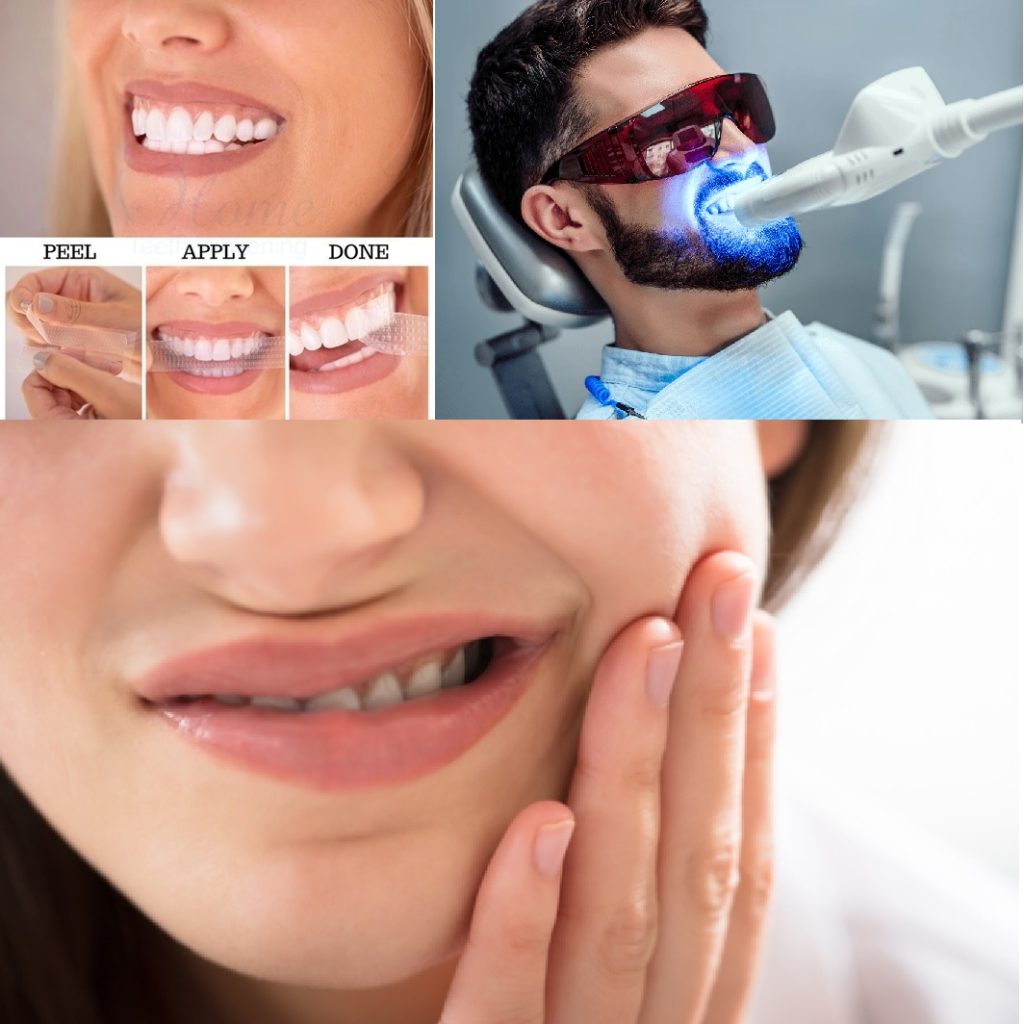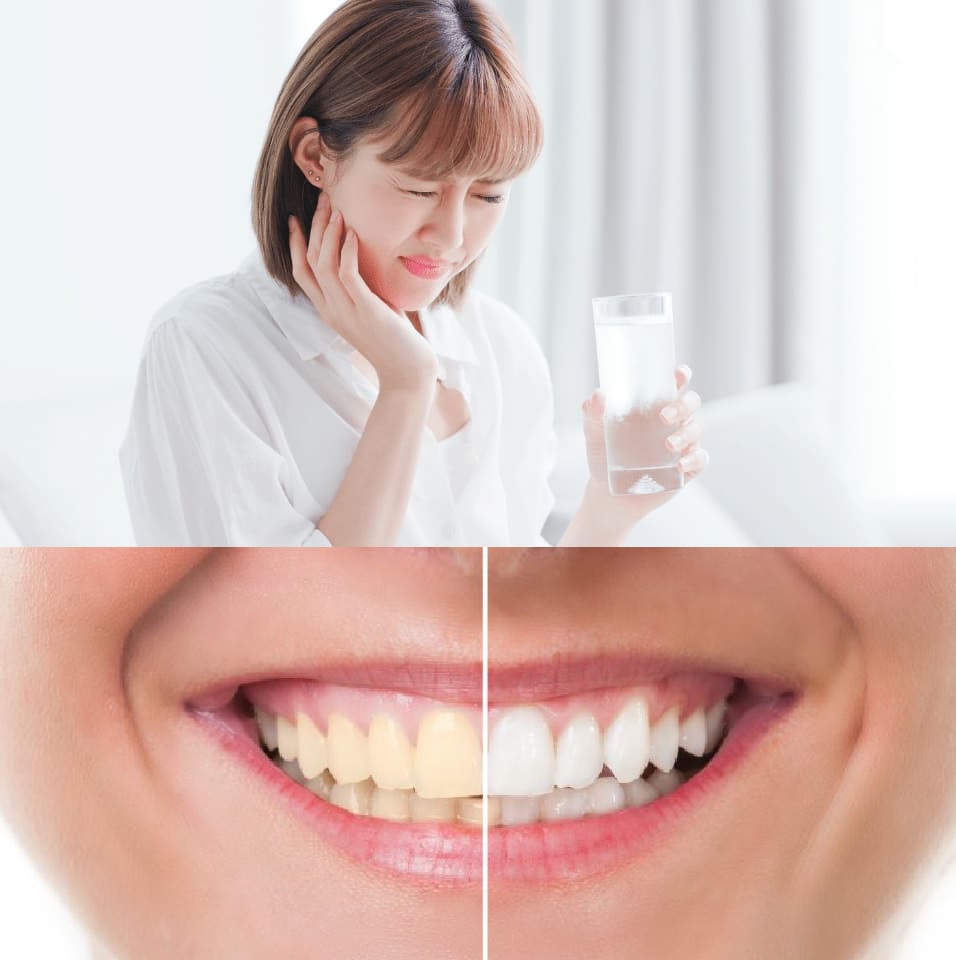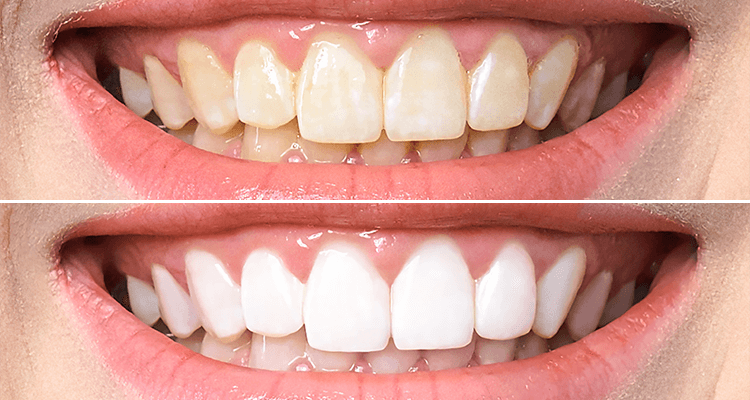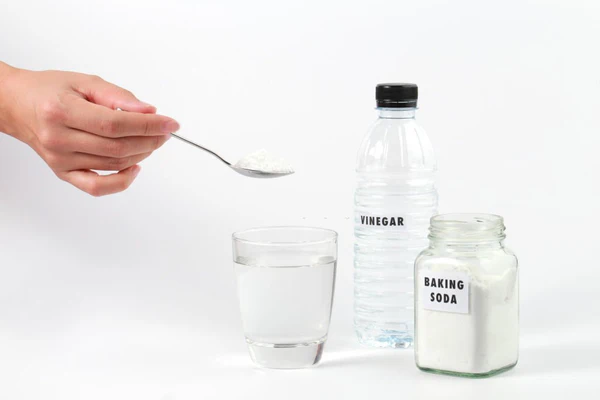Proper Usage of Whitening Strips: Achieve a Brighter Smile Safely and Effectively
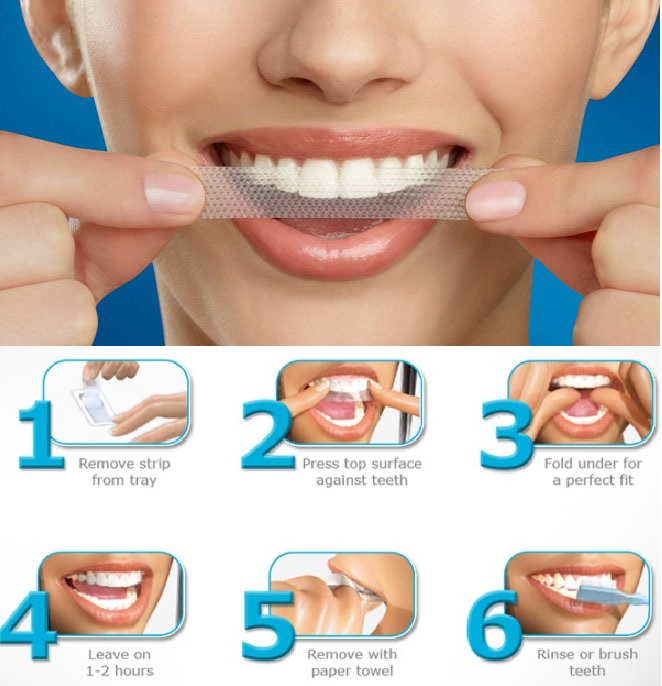
Whitening strips are a popular and convenient way to brighten your smile at home. These thin, flexible strips are coated with a peroxide-based gel that helps remove surface stains and lighten the color of your teeth. While whitening strips can deliver noticeable results, proper usage is essential to avoid potential side effects like sensitivity or uneven whitening. Using them incorrectly can also reduce their effectiveness, preventing you from getting the best results.
In this comprehensive guide, we’ll explore the proper usage of whitening strips, how they work, the common mistakes to avoid, and tips for getting a brighter smile without discomfort. Whether you’re a first-time user or looking to improve your whitening routine, this guide has all the answers.
How Whitening Strips Work
Whitening strips are coated with a thin layer of hydrogen peroxide or carbamide peroxide, which acts as a bleaching agent to break down stains on the enamel. As the strips conform to the surface of your teeth, the peroxide penetrates the enamel to lift both surface and deeper stains.
Most whitening strips are designed to be worn for a specific amount of time—usually between 10 to 30 minutes—depending on the brand and the strength of the whitening agent. Consistent use over the recommended period can result in visibly whiter teeth.
Step-by-Step Guide: How to Use Whitening Strips Properly
To ensure you get the most out of your whitening strips, follow this step-by-step guide:
1. Brush Your Teeth Before Using Whitening Strips (But Not Right Before)
Before applying whitening strips, it’s important to start with a clean surface to ensure the whitening agent can fully penetrate the enamel. However, don’t brush immediately before using the strips as this can increase sensitivity. Instead, brush gently and wait 30 minutes before applying the strips to allow your teeth to recover.
Why Wait?
Brushing can temporarily soften the enamel, making it more vulnerable to irritation from the whitening gel. By waiting, you reduce the risk of discomfort and ensure the enamel is ready for the treatment.
Read more about brushing your teeth before using whitening strips for tips on the best oral hygiene practices.
2. Dry Your Teeth for Better Adhesion
Before applying the strips, make sure your teeth are dry. This helps the strips adhere more securely to your teeth, allowing the whitening gel to stay in contact with the enamel. You can use a tissue or simply swallow any excess saliva to dry the surface of your teeth before placing the strips.
3. Apply the Strips Correctly
Peel the backing off the strip and carefully apply it to your teeth, pressing it firmly against the surface. Make sure the strip covers the entire front surface of your teeth, and fold the excess strip behind your teeth to secure it in place. For best results, follow the manufacturer’s instructions closely.
Tips for Correct Application:
- Align the strip carefully with your gum line, avoiding any overlap onto your gums to prevent irritation.
- Smooth out any wrinkles in the strip to ensure full contact with your teeth.
4. Follow the Recommended Wear Time
Always adhere to the recommended wear time on the product’s packaging. Most whitening strips are designed to be worn for 10-30 minutes per session. Wearing the strips longer than recommended can lead to increased sensitivity or gum irritation without providing faster results.
Internally link: Learn more about managing tooth sensitivity during whitening treatments and why following usage guidelines is key.
5. Avoid Eating or Drinking During Application
While the strips are on your teeth, avoid eating or drinking, as this can cause the strips to slip out of place or reduce the effectiveness of the whitening agent. Drinking water is generally safe, but avoid anything acidic, sugary, or colored.
6. Remove the Strips and Rinse Your Mouth
After the allotted time, gently remove the strips. You may notice some gel residue left on your teeth—this is normal. Rinse your mouth with water to remove any remaining gel and freshen your breath. Avoid brushing immediately after removing the strips to reduce the risk of enamel irritation.
How Often Should You Use Whitening Strips?
The frequency of use depends on the product you’re using. Most whitening strips are designed for daily use over a period of 7-14 days to achieve the desired level of whitening. It’s important to follow the specific instructions provided by the manufacturer to avoid overuse, which can lead to tooth sensitivity or damage to the enamel.
Avoid Overusing Whitening Strips
While it may be tempting to use the strips more frequently to speed up the whitening process, overuse can harm your teeth. Overuse can weaken the enamel, leading to increased sensitivity, gum irritation, or even uneven whitening. Stick to the recommended treatment plan and consult with your dentist if you’re unsure about how often to use the strips.
Internally link: Check out our full guide on how to prevent tooth sensitivity during whitening treatments for more tips.
Common Mistakes to Avoid When Using Whitening Strips
To get the best results from whitening strips, it’s essential to avoid common mistakes that can interfere with the whitening process or harm your teeth.
1. Brushing Too Hard Before Application
Brushing too hard can weaken your enamel, making it more susceptible to the whitening agents. Use a soft-bristled toothbrush and brush gently before applying the strips. This ensures your teeth are clean without causing irritation.
2. Using Whitening Strips on Damaged Teeth
If you have cracked, chipped, or sensitive teeth, consult your dentist before using whitening strips. Whitening agents can seep into cracks and exacerbate sensitivity or cause further damage.
3. Overlapping Strips Onto the Gums
Make sure the strips only cover your teeth and do not touch your gums. Whitening agents can irritate the gum tissue, leading to redness and discomfort. If any gel touches your gums, wipe it away immediately with a clean tissue.
4. Skipping Days in the Treatment Plan
For optimal results, use whitening strips as directed, typically once per day for the duration of the treatment plan. Skipping days can result in uneven whitening or delayed results.
Internally link: Discover more about proper usage of whitening products and how to maximize your whitening routine.
Best Practices for Using Whitening Strips Safely
To ensure a safe and effective whitening experience, follow these additional best practices:
1. Use a Desensitizing Toothpaste
If you’re prone to sensitivity, start using a toothpaste for sensitive teeth before beginning your whitening treatment. This can help strengthen your enamel and reduce the risk of discomfort during the whitening process.
2. Wait 30 Minutes Before Brushing After Using Whitening Strips
After removing the strips, it’s a good idea to wait at least 30 minutes before brushing. This allows your enamel to re-harden and reduces the risk of irritation.
3. Maintain Regular Dental Checkups
Regular dental visits are essential, especially when using whitening products. Your dentist can monitor your oral health and recommend any necessary treatments to keep your teeth healthy and safe during whitening.
Internally link: Learn more about the importance of dental checkups during whitening treatments to ensure optimal oral health.
Maintaining Results After Whitening
Once you’ve completed your whitening treatment, it’s important to maintain your results by adopting good oral hygiene habits and being mindful of what you eat and drink. Follow these tips to keep your smile bright:
1. Avoid Stain-Causing Foods and Drinks
After whitening, limit your consumption of foods and drinks that can stain your teeth, such as coffee, tea, red wine, and dark-colored berries. If you do consume these, consider using a straw to minimize contact with your teeth or rinse your mouth with water afterward.
2. Use a Whitening Toothpaste
To maintain your white smile, switch to a whitening toothpaste designed for daily use. This can help remove surface stains and extend the results of your whitening treatment.
3. Consider Touch-Up Treatments
Depending on your lifestyle and diet, you may need to use touch-up whitening treatments a few times a year. Some whitening strips are designed specifically for touch-ups and can help maintain your bright smile without over-bleaching your teeth.
Explore our tips for maintaining a bright smile after whitening to prolong your results.
Conclusion
Using whitening strips is an easy and effective way to brighten your smile, but proper usage is key to achieving the best results without discomfort. By following the steps outlined in this guide—brushing gently, applying the strips correctly, adhering to the recommended wear time, and avoiding common mistakes—you can safely and effectively whiten your teeth.
If you have concerns about sensitivity or the whitening process, always consult with your dentist to ensure that you’re using the right products for your teeth.
Related Posts You Might Like:
- Managing Tooth Sensitivity After Whitening Treatments
- Best Practices for Achieving a Brighter Smile Safely
- How Often Should You Use Whitening Strips?


